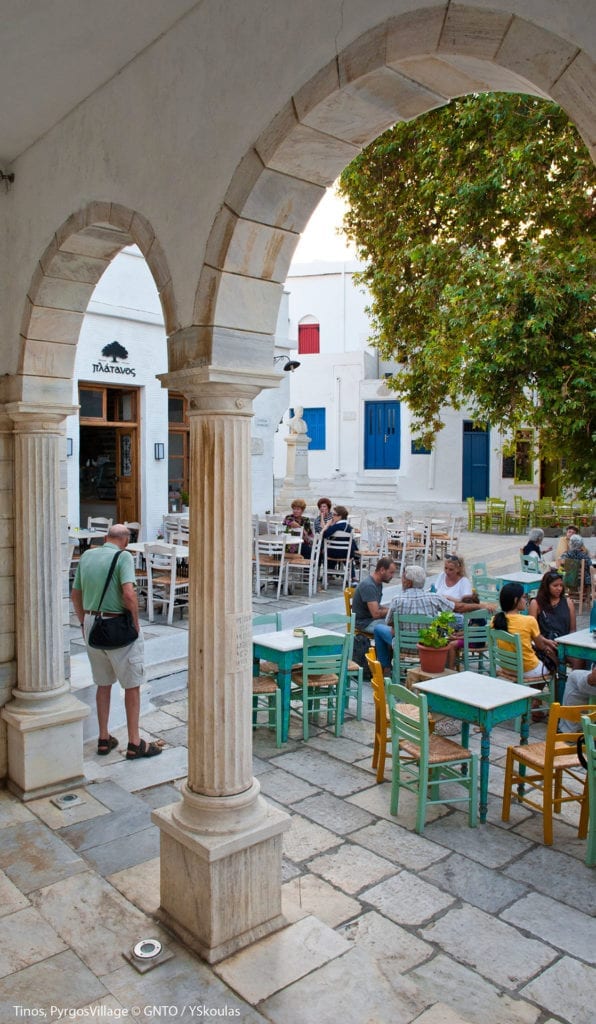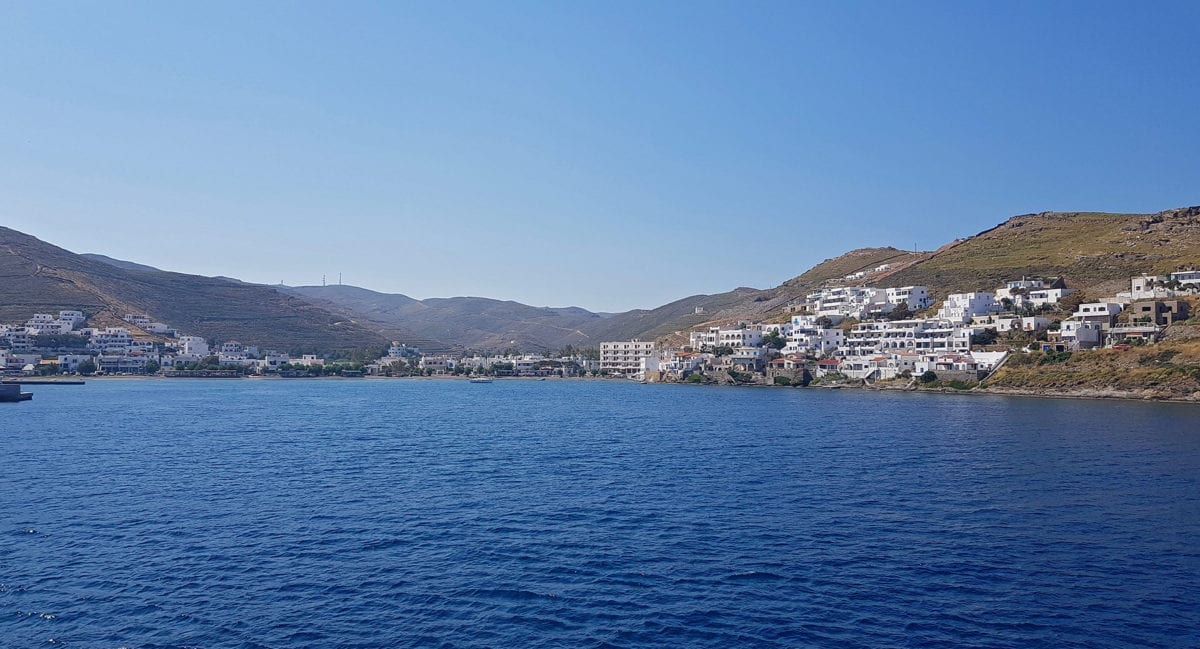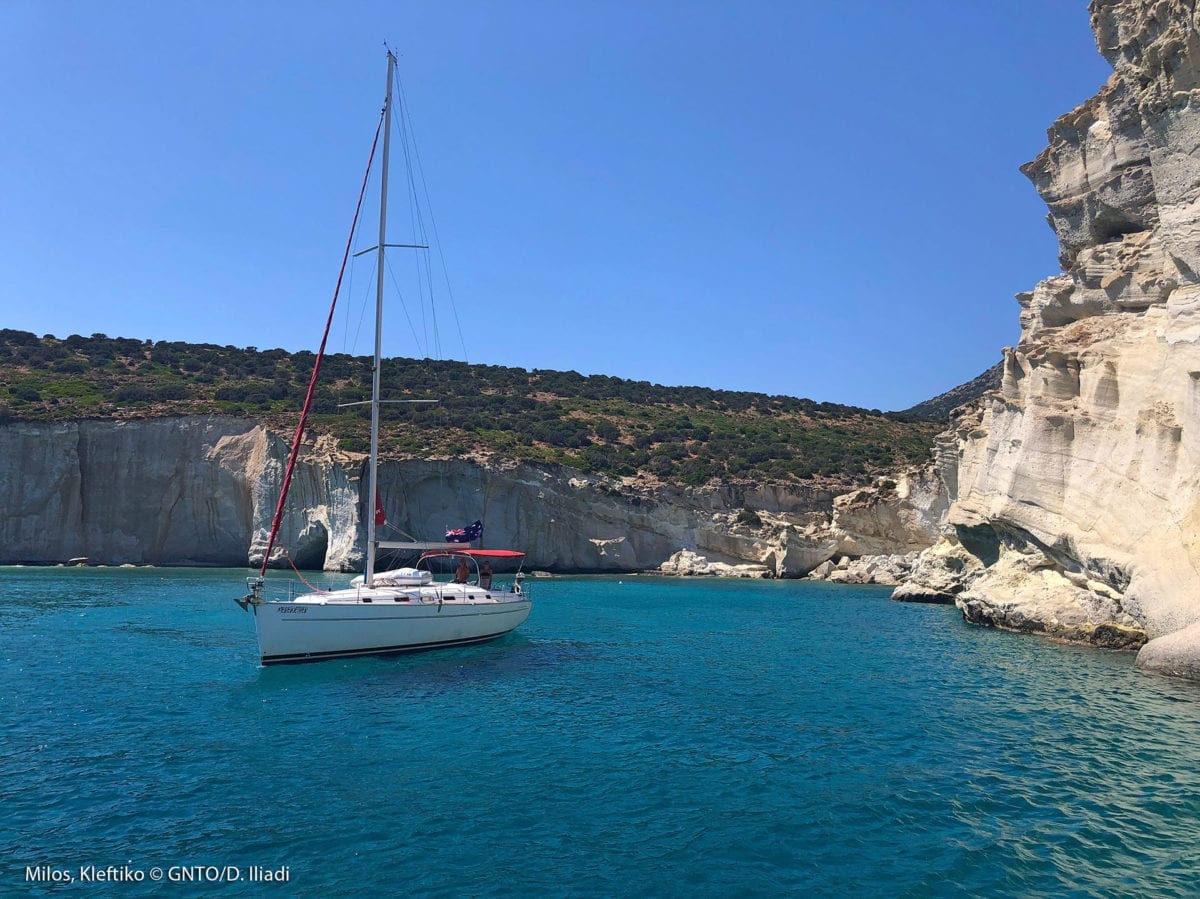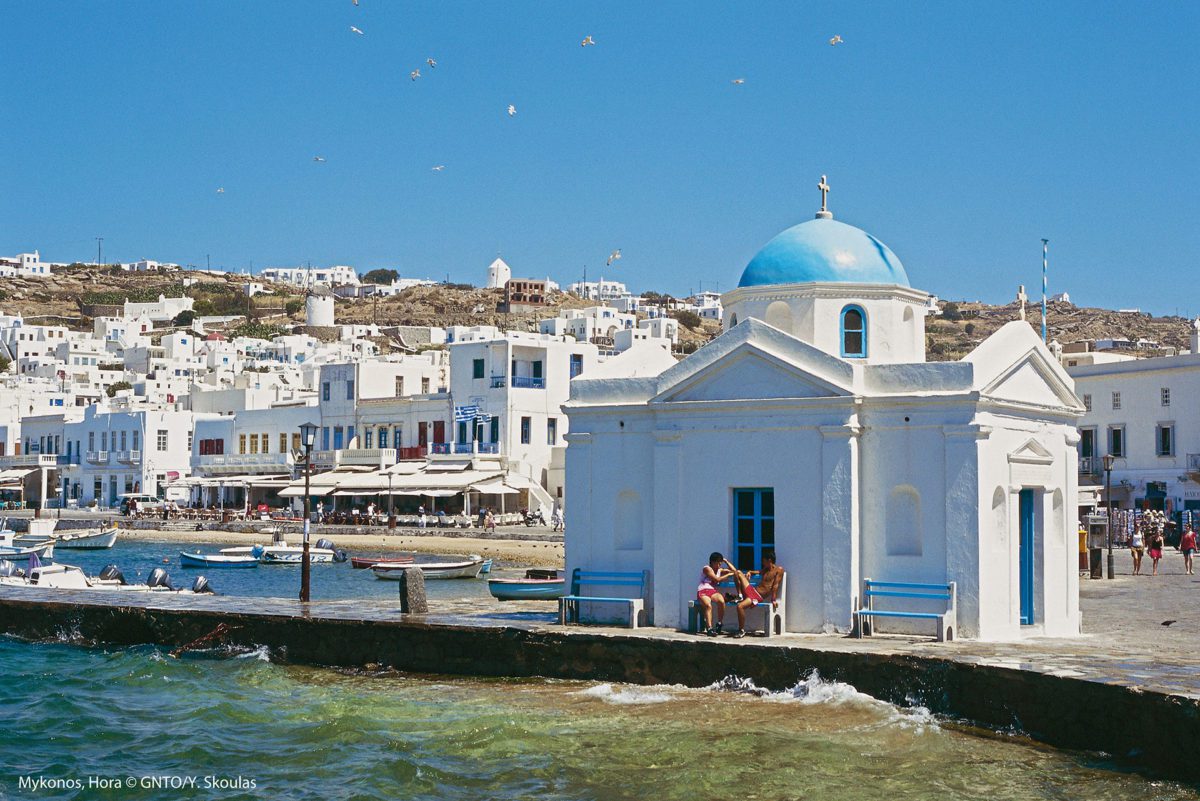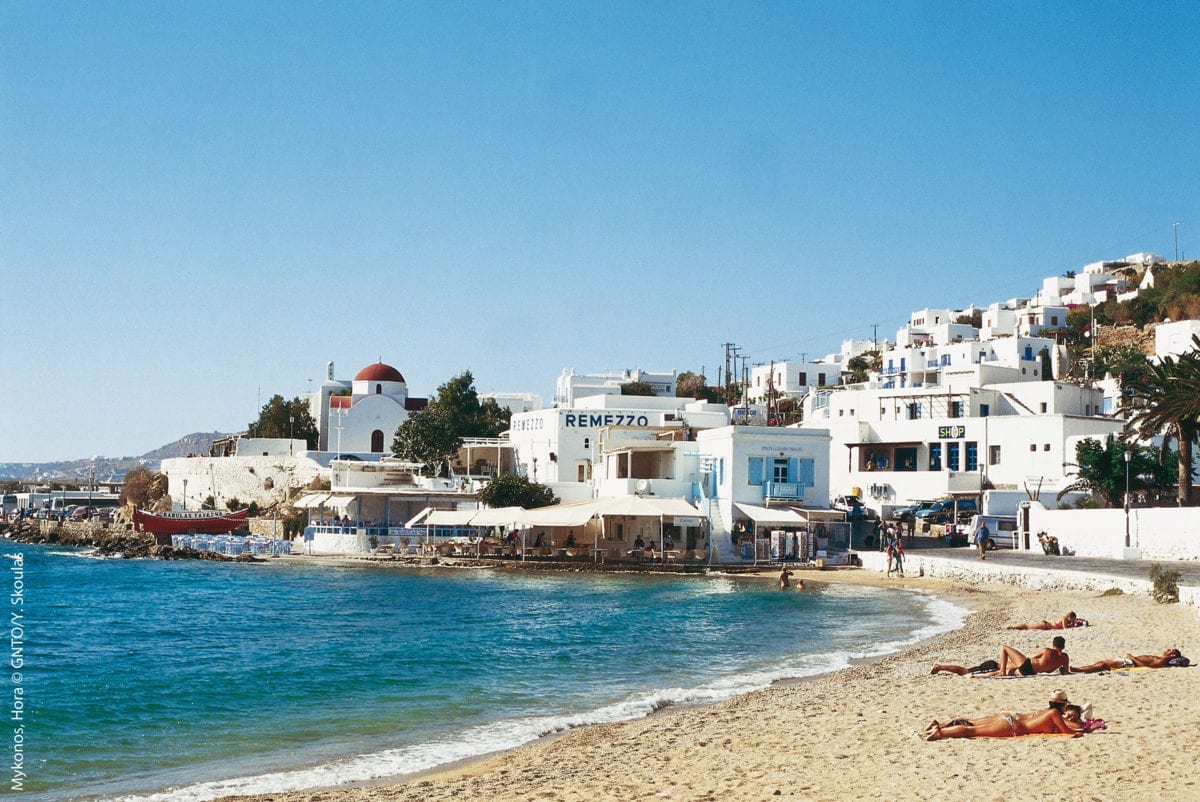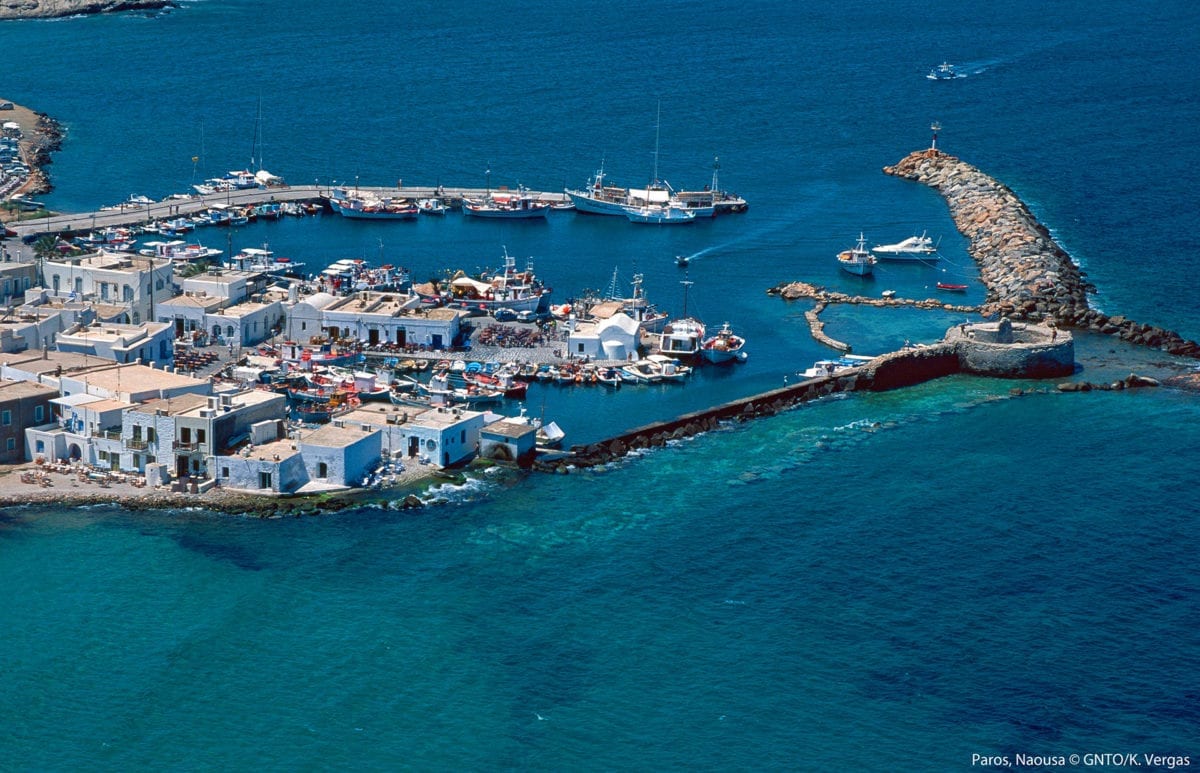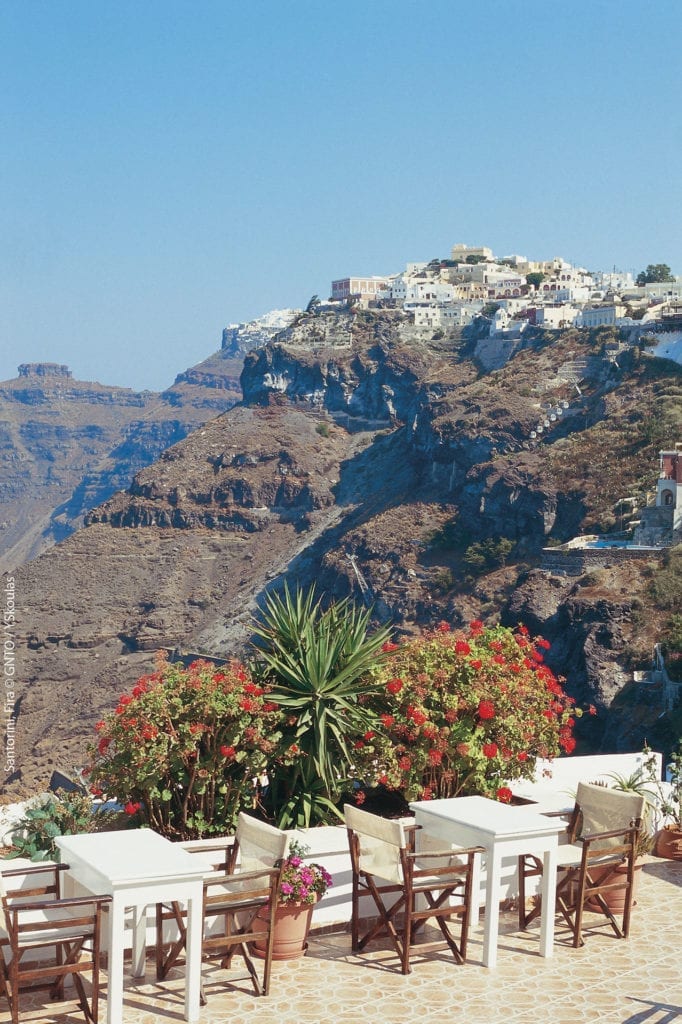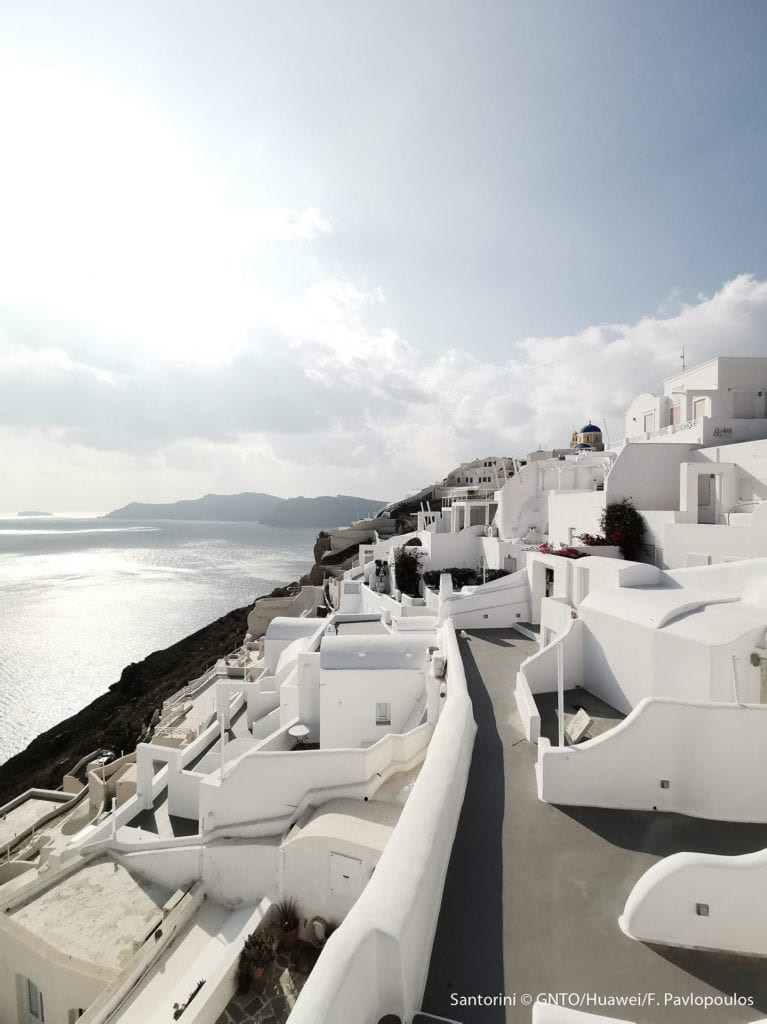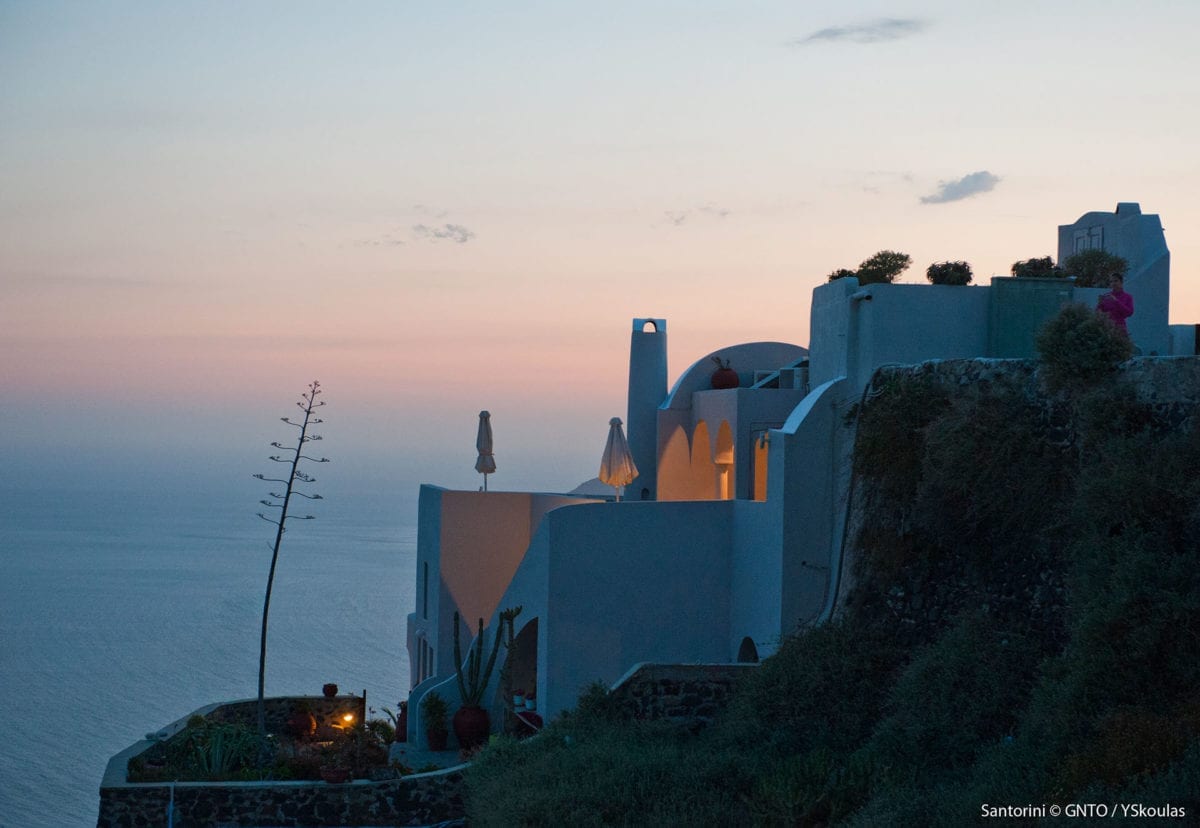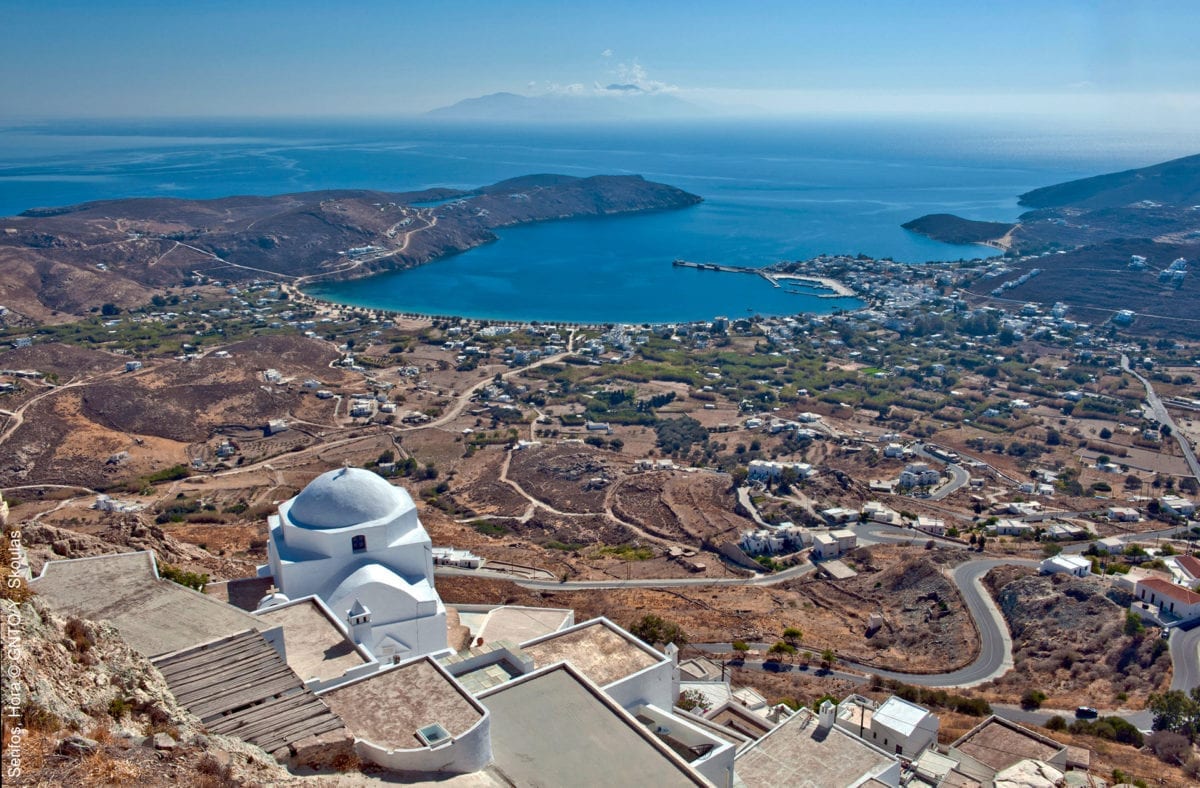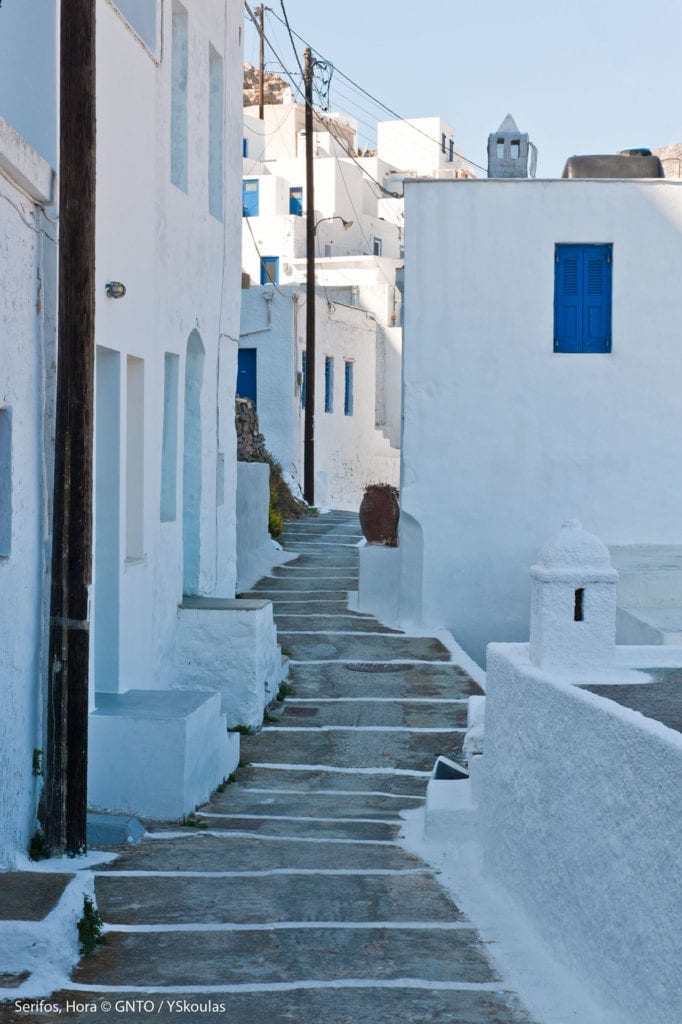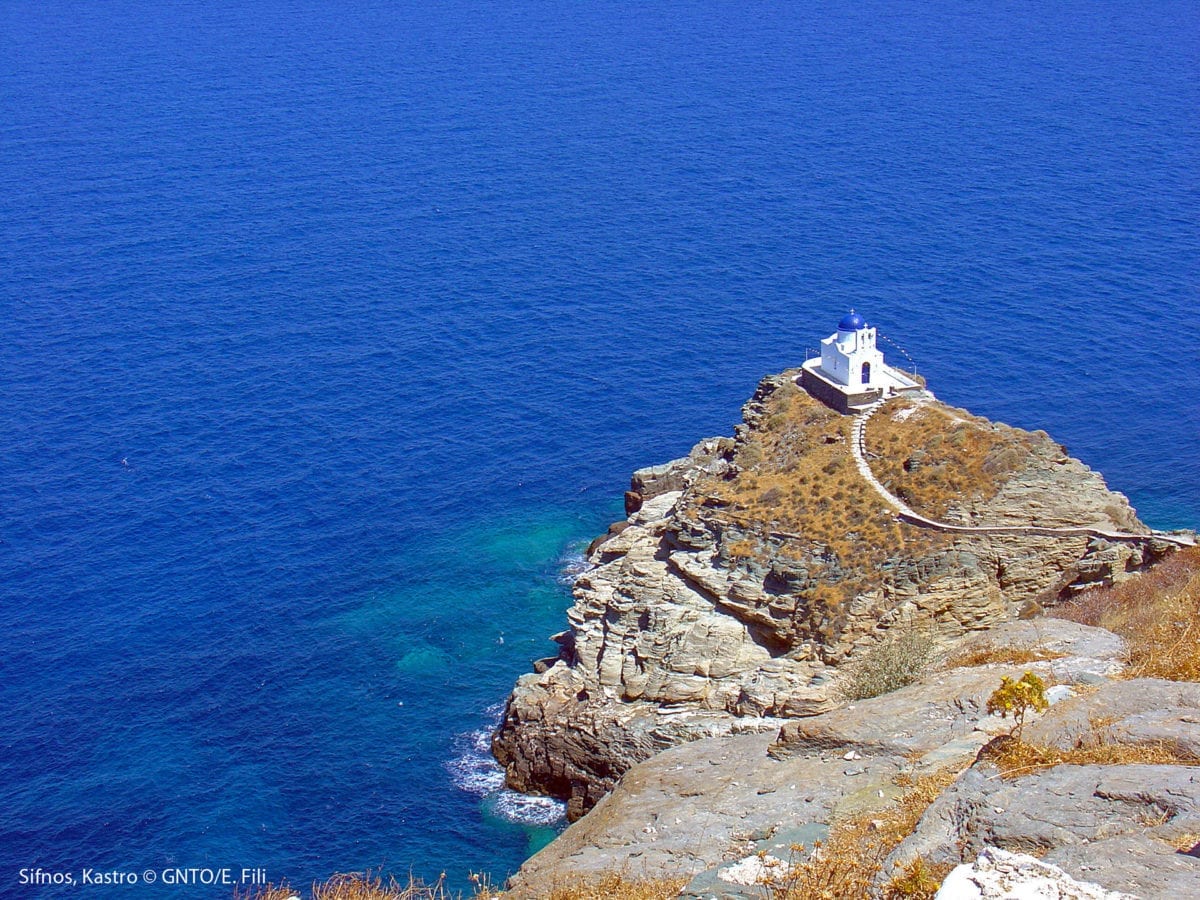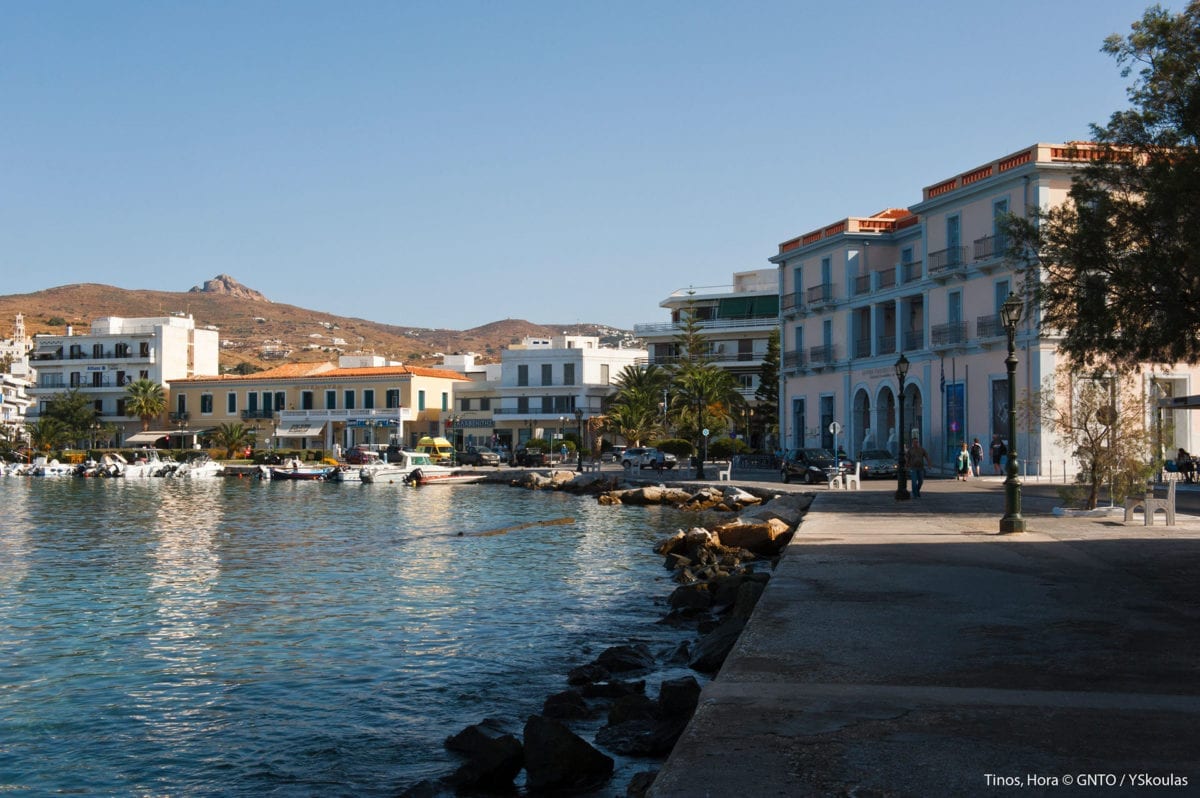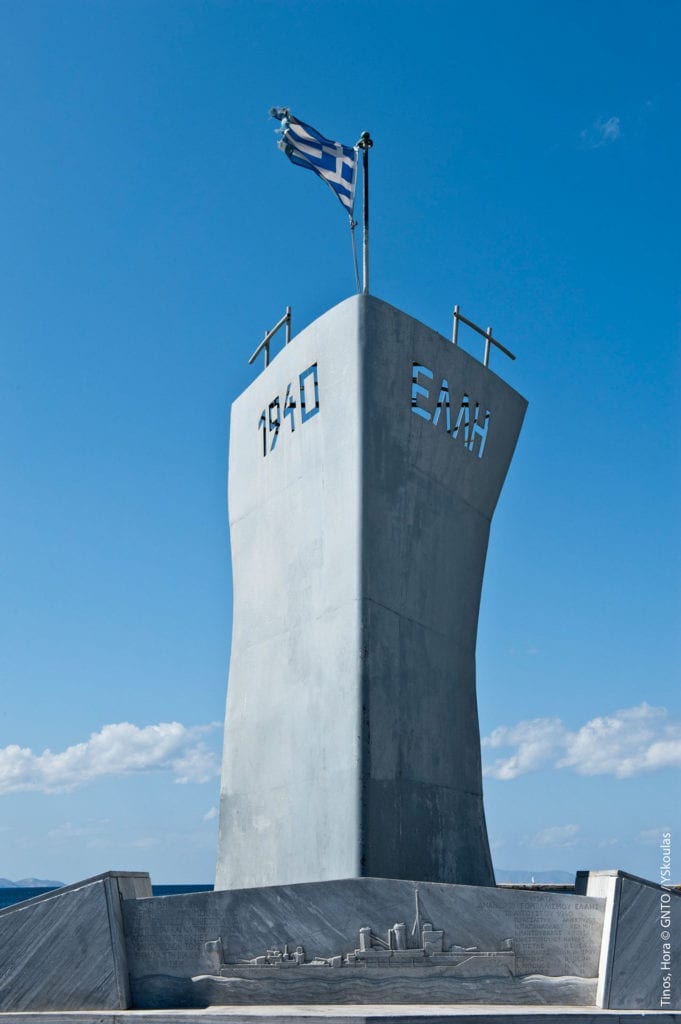The quintessential Greek island of Santorini is unerringly stunning. There are about 1,000 reasons to go there … and none to ever leave.
Imagine a big triangle out in the Aegean Sea, whose tips are the coasts of southern Greece, southwestern Turkey and Crete. In the center of that triangle is Santorini (Greek name Thira), Island of Wine.
Get a lay of the land by holding up your right hand and forming a backward “C.” That crescent your hand is making is the shape of Santorini. Oia (a major entertainment hub) is located at the tips of your fingers and Fira (the island’s capital) is right about where your index finger meets your hand. These villages provide bases of operations as you explore this land of volcanic cliffs, ancient sites, lively beaches and Cycladic architecture.
All photos courtesy Visit Greece.gr unless otherwise marked
Postcard-perfect, Santorini is a painting in every direction. The Cyclades style is one of whitewashed walls, blue domes and connected structures that seemingly flow into each other. Narrow roads are hemmed in by narrow, two-story homes with walls built right to the curb. In a nod to tradition, as these tight roads work their way through dense cities, sharp turns are given rounded corners, making it easier for mules and donkeys to pass.
What’s Santorini best known for? Yes, both the wine and the views. The vistas come courtesy of volcanic activity thousands of years ago that created the archipelago of Santorini and the islands within the “C” of your right hand.
The underwater Santorini volcano (still active) generously gave the islands their cliffs, and as a bonus, volcanic beach sand in black, red and white. Throughout western Santorini, sunset-watching is de rigueur as the heavens and earth regularly combine for spectacular shows.
And yes, Santorini has 20 excellent wineries producing the best vintages in all of Greece from some of the oldest continuously-cultivated vines in the world. Wines range from Assyrtiko, a very popular white, to Vinsanto, a sweet dessert wine made from dried-in-the-sun grapes. Most wineries are open to the public.
Serious hikers will want to get to the uninhabited island of Nea Kameni for a trek through the volcanic park, past active, smoking craters and hissing vents of steam.
To find the true Santorini, visit and revel in the traditions of one of the islands’ small towns. Megalochori, south of Fira along the coast, is an enchanted mosaic of white and blue buildings featuring a charming public square watched over by cliffside churches.
About 15 minutes down the coast from Oia, the architecturally-interconnected town of Finikia presents a labyrinth of tight, cobble-stoned alleys leading to delightful pastel-colored houses and small, family-run hotels.
Eat like a local. Yeah, try Greek fare like gyros, mussaka, lamb and Greek salad, but also saganaki (honey-covered fried cheese in filo pastry), tomato gefthedes (like a tomato beignet) and fava me koukia (smashed yellow split-pea fava beans mixed with onions and garlic).
Shopping options run the gamut, from the Bohemian markets of Kamari and handmade leather goods in Fira to high-end wares in Oia. Pick up some Santorini tomato seeds for gardening fun back home. No worries about getting around the island, buses run year round.
Summer is high season all across Santorini. Beat the crowds and visit in the fall or winter.
A Lodging Suggestion
Canaves Oia Sunday Suites is located near the Byzantine Castle ruins in Oia, with dazzling views of the Aegean Sea and the volcano. Whitewashed seaside luxury cave suites (canaves means wine cellar) cascade down the caldera around three pools: one infinity, one regular and one on the roof. Restaurants and a well-equipped spa are on premises.
